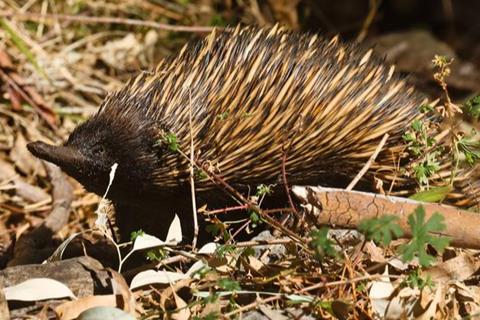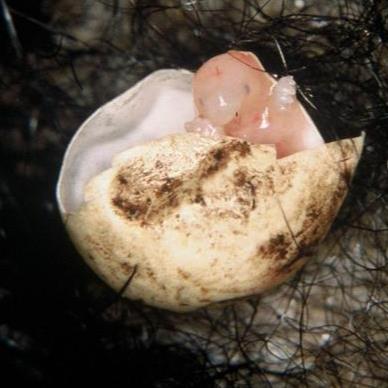Research from the University of Adelaide shows microbial communities in echidna pseudo-pouches undergo dramatic changes while the animal is lactating, which could help in creating an environment for their young, known as puggles, to thrive.

Echidnas are monotremes, which are the only mammals that lay eggs. The early developmental stage at which they hatch from their egg means that the puggles lack a functioning immune system.
READ MORE: Reproductive biology though the lens of the microbiome
READ MORE: Lemurs, geophagy and the gut microbiome
“We know the reproductive microbiome is important to infant health, including for humans, but little is known about how it functions in egg-laying monotremes,” says the University of Adelaide’s Isabella Wilson, whose study was published in FEMS Microbiology Ecology.
“Instead of picking up vaginal microbiota during delivery like other mammals, echidnas are shielded by the eggshell and don’t come into direct contact with the cloaca.”
Life in the pseudo-pouch
The first few weeks of life are critical for puggles, as they hatch at an early developmental stage. They continue to grow in the pseudo-pouch, which is created from the contraction of abdominal muscles and disappears when a female is not nursing.
“We investigated changes in the echidna pseudo-pouch microbiota during different stages of the reproductive cycle and found that during lactation pseudo-pouch microbial communities show significant differences in composition compared with samples taken outside of breeding season or during courtship and mating,” Wilson says.
“This suggests that the echidna pseudo-pouch environment changes during lactation to accommodate young that lack a functional adaptive immune system.”
Unusual lactation
The way puggles suckle may contribute to the shift in microbes.
“Another unique aspect of echidna biology is that they lack nipples. Instead of suckling like other species, the puggle rubs its beak against a part of the pseudo-pouch called the milk patch, causing milk to come out of the skin, sort of like a sweat or oil gland,” says Wilson.
“We think that compounds within the milk and from the skin probably contribute to the changes we see in the pseudo-pouch microbiota during lactation.”
Bacterial landscape
Echidnas are commonly held in zoos in Australia and around the world. Previous work from the same research group showed big differences in the gut microbiome between echidnas in zoos and in the wild.

“We were surprised to find no major difference in the pseudo-pouch between zoo-managed and wild animals, which suggests to us that the milk, rather than external environmental factors like captivity, is what primarily shapes the bacterial landscape of the pseudo-pouch,” Wilson says.
“For conservation in the wild, and in breeding programs, we need to learn more about the bacteria found in echidna pseudo-pouches and better understand how these affect echidna health.”
The University of Adelaide and the University of South Australia are joining forces to become Australia’s new major university – Adelaide University. Building on the strengths, legacies and resources of two leading universities, Adelaide University will deliver globally relevant research at scale, innovative, industry-informed teaching and an outstanding student experience. Adelaide University will open its doors in January 2026. Find out more on the Adelaide University website.







No comments yet